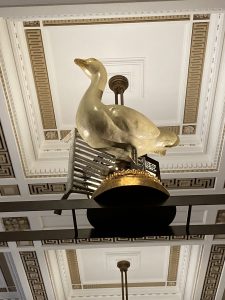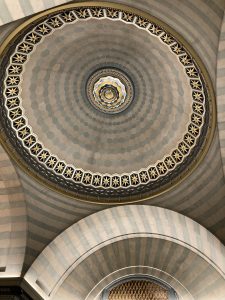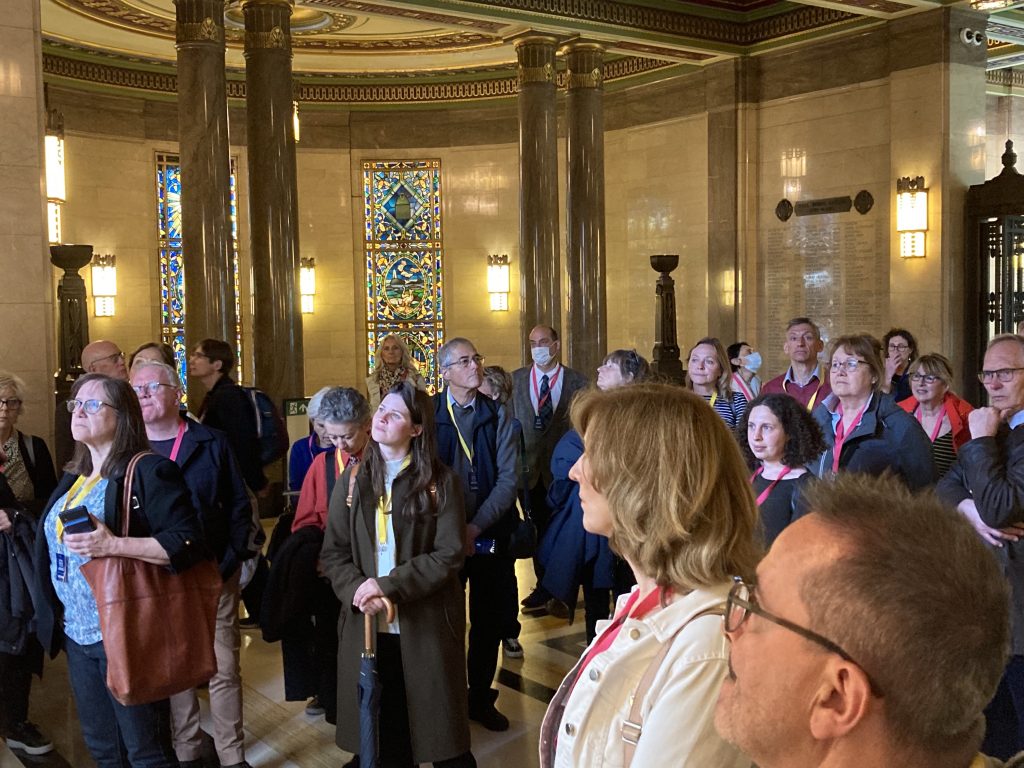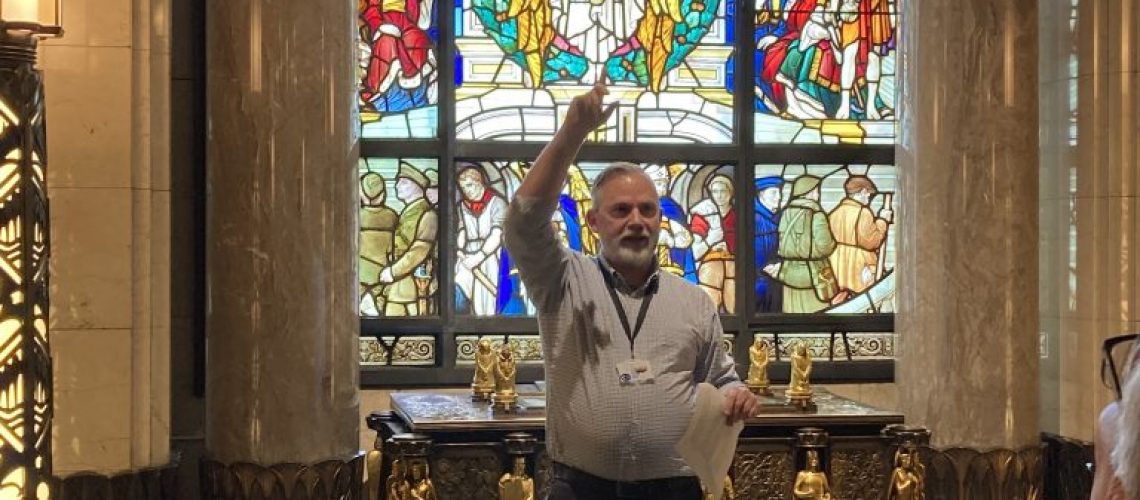In May, the membership of the City of Westminster Guide Lecturers Association was treated to an extraordinary tour of an extraordinary building – the Freemasons’ Hall.
Simon Tansley, the building’s Visitor Services Manager and our guide, explained that there have been meetings on this site since 1775. The current building, by Ashley and Newman (perhaps better known for the Ebury Bridge Estate), is not particularly interesting from the outside, but the
interior is a treasure trove of design and history – built from 1927 to 1933 after fundraising in 1925 had initially provided £825,000 (well over £50 000 000 today).

Our tour began in the museum, passing under an arch with a visual reminder that meetings were first held in the Goose and Gridiron pub, and surely that portrait was a copy of the Prince Regent by Lawrence? Well, no, definitely school of, if not Lawrence himself, and it stood behind a carefully
constructed chair built to accommodate the 111kg (17.5st) Royal Grandmaster in 1791. The museum also has less grand items such as the regalia of a man who travelled the world, networking with lodges all the way, and a cabinet devoted to the women in Freemasonry such as Annie Besant, who later became the Most Puissant Grand Commander of the International Order of Freemasonry for Men and Women.
It was difficult to tear ourselves away (comforted that the museum is open to all and free for further visits) but there is so much more to see in this building. We moved on to the tower section with a window and bronze memorial to Freemasons who died in the Great War – an ever-present reminder that the first name given to the hall was the Masonic Peace Memorial.
On to the Grand Temple. The black and white rug represents the duality of human nature and the red and blue borders, the chapter levels of beyond the craft. The splendid celestial ceiling is the same area as the rug, but the height of the room makes it look much smaller. There is so much symbolism it is difficult to keep track of it all.

Simon took us through the building to see two other rooms not normally open to the public and not shown on the other tours run by the Hall. Both are fascinating but, like Simon, I preferred the relative cosiness of lodge room 17, the Buckinghamshire room, to the greater grandeur of lodge
room 10. That said, the circular area at the centre of the ceiling is a fine reminder that this was one of the earliest air-conditioned buildings in the country (look for the small vertical grids at the edge of the dome and around the walls). Then, in lodge room 17 we could see the rough and smooth
ashlars, a reminder of the Freemason’s journey through the Craft.
The Archivist, Susan Snell kindly spent some time with us and was clear that it was possible to register as a reader to use the facilities. One of the largest Masonic libraries, it has collections of literature both extolling and criticising the Craft.
We ended passing down corridors with pictures of well-known Freemasons -Josephine Baker, the Chevalier d’Eon and Peter Sellars (although I find it hard to imagine others keeping a straight face when Sellars was taking part in the rituals).
And finally, a well-earned drink in the bar (coffee bar during the day) which is open to all and a fine example of the hospitality and welcome we were shown.
Report written by Westminster Guide Devon Maserati

A rapt audience of guides!

